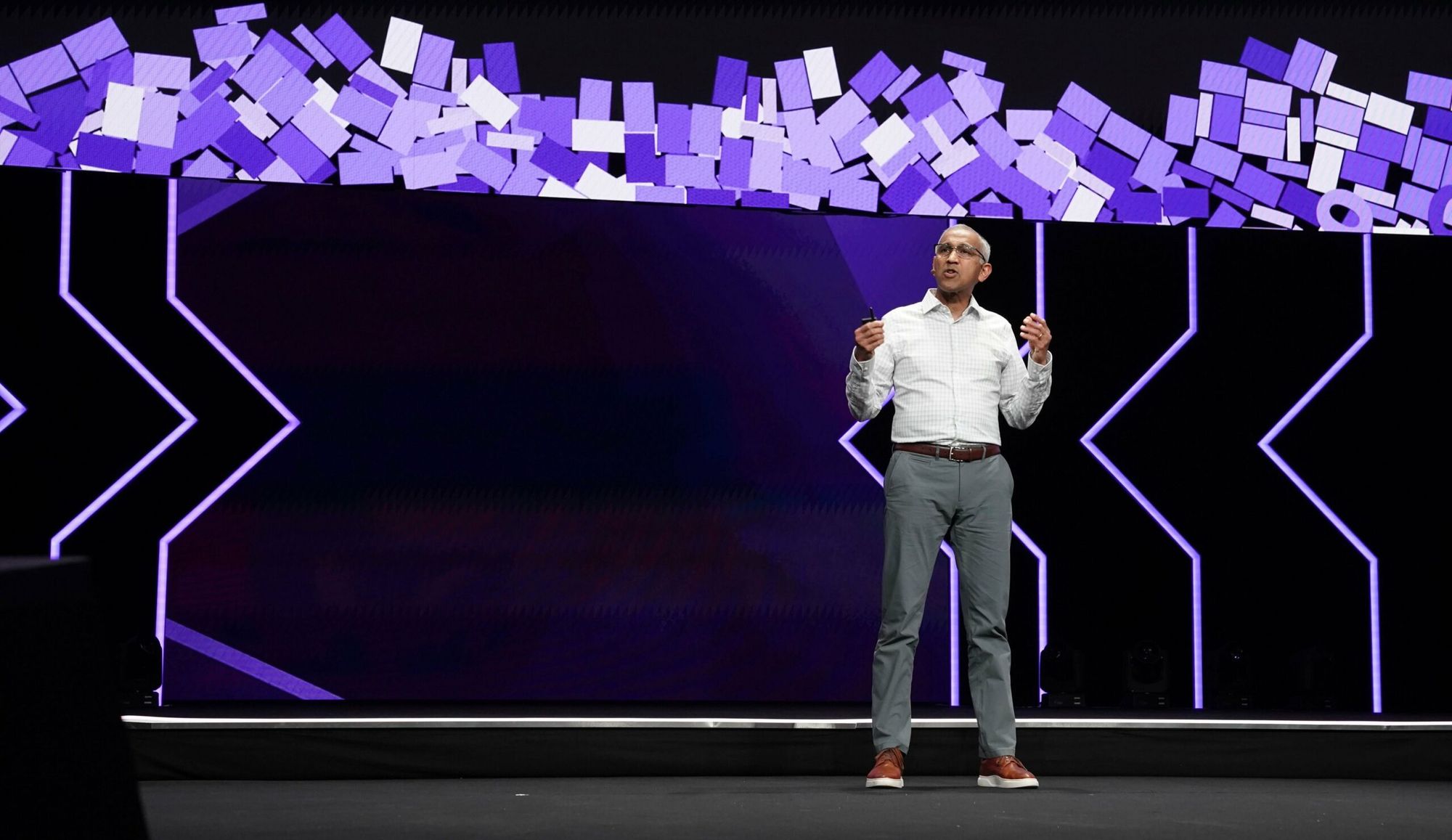On a grey, chilly, wet Chicago morning your correspondent makes a quick exit on South Michigan Avenue to the American Writers Museum to dodge the rain and to be reminded of Scott Fitzgerald’s famous dictum that “there are no second acts in American lives”. The same can be said of most tech firms, of course. The sector is dominated by one-hit wonders that blossom then fade, becoming progressively less relevant as others come up with new, better ways to do the same things. But a few go on to reinvent themselves. And for modern datacentre pioneer Nutanix, in the Windy City this week for a renewal of its .Next conference, the opportunity is clearly there to make a third-act splash.
Bear with my extended comparison. Nutanix made its name through hyperconverged infrastructure, melding compute, networking and storage in slim servers that wrote the death warrant for three-tier architecture and tattooed the legend ‘LEGACY’ on the elevator-sized boxes being delivered by the likes of IBM and HPE. Its second act was being reborn as a software-and-subscriptions, enterprise cloud player simplifying datacentre infrastructure on any commodity hardware. For its third, it wants to be the control plane for the increasingly messy modern IT environment where spiralling costs, disparate workload placements, sustainability concerns, skills shortages and security fears beset CIOs. Founder Dheeraj Pandey may have left the building but this is a company that still bears the stamp of his chutzpah and ambition to break the glass ceiling of enterprise power players.
CEO Rajiv Ramaswami: Calm among chaos
Here's the pitch. We all know that it’s a hybrid multi-cloud world for mature companies who seek to hedge their bets by placing workloads where they best belong. But underneath the diagram, chaos reigns. Public cloud giants want more money, it’s hard to move workloads across environments, ransomware is terrifying, data volumes multiply, sustainability is the new boardroom challenge and even if you can find people with skills then you probably have problems keeping them. Nutanix wants to be the company that lets you wrap your arms around all of this, so you breathe more easily by providing a low-admin, power-efficient, highly automated approach to datacentre control.
Two-and-a-half years into his stewardship, CEO Rajiv Ramaswami sits with me between meetings and reviews his progress. Nutanix is cashflow-positive and it has simplified a once-daunting portfolio into blocks such as cloud infrastructure, cloud management and database.
Another task was to provide a vision of the future and Nutanix’s place therein and today, he is midway through an attempt to position the company at the beating heart of the world of containers, cloud cost management, energy-efficiency and automating the management of databases, applications and data services.

Ramaswami can look back with some satisfaction. Renewals and retention rates are very high and its NPS score in the 90s is the envy of enterprise IT rivals. (“They’re the nice guys of the datacentre,” one customer admin on the show floor told me. “People like them in a way that’s unusual in this space, which has tended to be hard-driving and hard-sell.”)
Being the nice guy extends to having a broad and open partnering strategy to cover verticals and geographies, but Ramaswami says growth in channel partner recruitment “has happened at a slower rate than I would like”. He wants to grow partnerships in every sense but of particular interest are regional cloud providers that can provide local knowledge, low latency and ways around the complexities of data sovereignty.
Softly spoken and modest as he is, the ex-VMware man is still optimistic that the ongoing saga of Broadcom’s acquisition of his former company could lead downstream to good things for Nutanix.
“Customers are concerned as to whether prices will go up, service will go down or there will be uncertainty over the product roadmap,” he said. “Many customers are happy with VMware and it’s a good company, but we hope unrest will benefit us.”
Controlling more
Nutanix’s always busy R&D shop dealt some trumps at .Next.
Perhaps most notable of the new tools is Nutanix Central, a console for managing and monitoring across network edge, on-prem datacentres, clouds and hosting providers. By providing policy management across access control, workload placement, data retention, security, load balancing and so on, Nutanix promises to deliver on the company’s heritage in simplification and point-and-click administration.
Two complementary new offerings, Nutanix Data Services for Kubernetes and Multicloud Snapshot Technology, respectively offer greater control for containers and cross-cloud data transit and customers certainly seemed impressed.
Ben Tobgui, group head of infrastructure at Australian apparel firm Forever New Clothing, said the ability to move workloads into the cloud more easily would be powerful. “Many vendors out there claim to be a single pane of glass but Nutanix really is a single plane of glass,” he said.
“It makes me sleep easier at night," said Jon Cosson, Head of IT and CISO at wealth-management firm JM Finn, of the new capabilities.
Follow 👉 The Stack on LinkedIn 👈
More generally, IT leaders queued up to serve up praise. Cosson recalled getting engineering support on Christmas Day followed by a call to check the service had been good.
“This is the absolute essence of why I chose Nutanix,” he added. “When it really hits the fan, you can get hold of someone. [Technology] will always go wrong but that makes a huge amount of difference.”
Paul Ballard, CIO of Circa Hospitality Group which runs casinos and other business interests, said the ability to have tight control on where data sits is a good fit for his highly regulated company, as is the ability to move fast.
“We pride ourselves on being able to do things quickly and we have to scramble to be prepared,” he said. “[Leaders] come up with an idea on Wednesday and we have to implement Friday. We can spin things up but, equally important, we can spin things down to have the resources to do something else.”
Sustainability on the agenda
Another focus area for Nutanix and customers is sustainability. A breakout session on that topic and the related area of ESG brought consensus that this remains a work in progress with as much art as science being applied, thanks to a lack of tools and consistent benchmarks. But, as watchdogs, lawmakers and non-executives mandate boardroom action, that will have to change.
Pressure is “coming from the investment community who want to know what’s greenwashing and what’s hot air”, said Steen Dalgas, Nutanix senior cloud economist. “But there absolutely is science and regulation driving this. The EU is ahead of the game [and we need to go beyond the point where] sustainability is a self-published report where I can put in what I want. Ninety-two per cent of decision-makers are reporting that sustainability is important to them.”
Nutanix .NEXT: What’s not to like?
Negatives? Even for this most popular of IT companies there are challenges of course. CEO Ramaswami lamented a recent brouhaha where it was discovered that Nutanix was running unlicensed software.
“I wish this was not the case but we do have to account for this,” he said, adding that an audit committee is working through the situation.
JM Finn’s Cosson agreed that sustainability is becoming a more prominent challenge. “Because sustainability is so important it would be useful to show [regulators] the stats,” he said. Anything Nutanix and other vendors can do to make that process simpler would help, he added.
Success brings its own challenges of course. The company declined to comment on reports that it had recently been in talks to be acquired. That of course is something that tends to be out of the hands of companies if the offer is generous enough but, after two days listening to peans of praise from customers and partners, you get the impression that it would be a better IT world were Nutanix to be allowed to remain solo.
Delivering the “single pane of glass” visibility to control all of the above is high up on any list of CIO goals and if Nutanix can pull off making Central the ‘go to’ place for datacentre asset control then it’s influence will be further bolstered. The way will be cleared to become an even larger concern that it is today, sitting on a market cap of $5.5bn, and the plot for a fourth act will need to be written.









